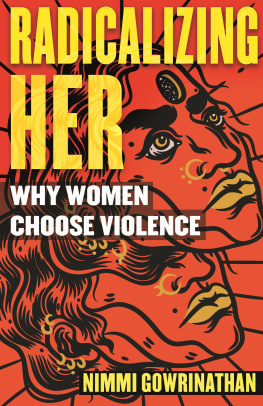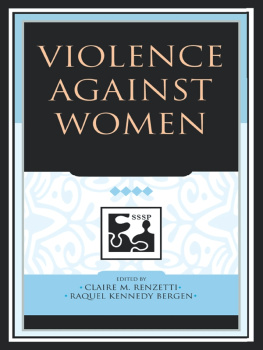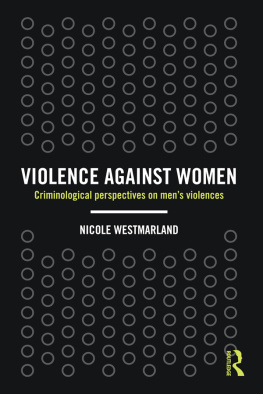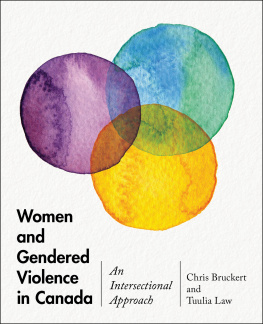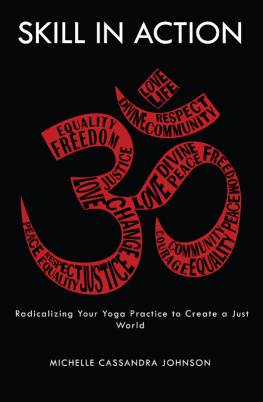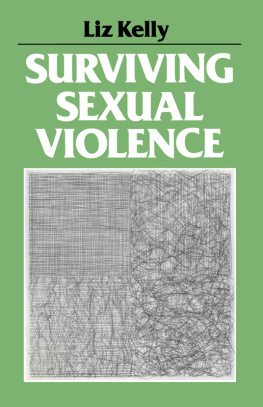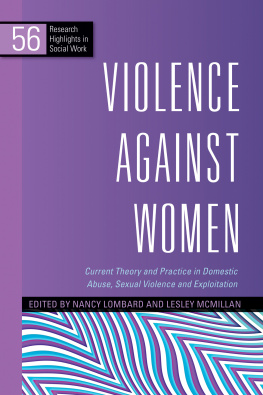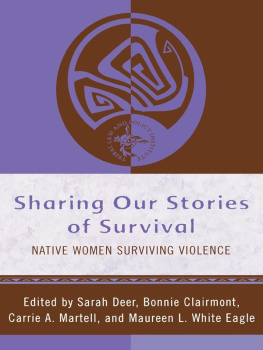Nimmi Gowrinathan - Radicalizing Her: Why Women Choose Violence
Here you can read online Nimmi Gowrinathan - Radicalizing Her: Why Women Choose Violence full text of the book (entire story) in english for free. Download pdf and epub, get meaning, cover and reviews about this ebook. year: 2021, publisher: Beacon Press, genre: Romance novel. Description of the work, (preface) as well as reviews are available. Best literature library LitArk.com created for fans of good reading and offers a wide selection of genres:
Romance novel
Science fiction
Adventure
Detective
Science
History
Home and family
Prose
Art
Politics
Computer
Non-fiction
Religion
Business
Children
Humor
Choose a favorite category and find really read worthwhile books. Enjoy immersion in the world of imagination, feel the emotions of the characters or learn something new for yourself, make an fascinating discovery.
- Book:Radicalizing Her: Why Women Choose Violence
- Author:
- Publisher:Beacon Press
- Genre:
- Year:2021
- Rating:4 / 5
- Favourites:Add to favourites
- Your mark:
- 80
- 1
- 2
- 3
- 4
- 5
Radicalizing Her: Why Women Choose Violence: summary, description and annotation
We offer to read an annotation, description, summary or preface (depends on what the author of the book "Radicalizing Her: Why Women Choose Violence" wrote himself). If you haven't found the necessary information about the book — write in the comments, we will try to find it.
Radicalizing Her: Why Women Choose Violence — read online for free the complete book (whole text) full work
Below is the text of the book, divided by pages. System saving the place of the last page read, allows you to conveniently read the book "Radicalizing Her: Why Women Choose Violence" online for free, without having to search again every time where you left off. Put a bookmark, and you can go to the page where you finished reading at any time.
Font size:
Interval:
Bookmark:



To my Amma,
I was forged in your quiet ferocity,
dedication, and sacrifice.
my Appa,
Your empathy is my blood;
your fight for freedom my soul.
my Mohan Mama,
Thank you for the books, we miss you.
&
my dearest Che,
You are my everything,
the revolution, our future.

W e are driving over small village roads built to hold the light tread of a bicycle; our vehicle toggles between potholes and brushing the edges of peoples homes. My son plays a car game he has invented: when we pass slabs of erect gray concrete pockmarked with destruction he points, Look at that one, Mom! Elephant or war? He is hoping the answer is elephant and that one is lurking nearby for him to befriend.
We are in northern Sri Lanka, traveling swiftly over contested soil that was once liberated and is now, in 2018, occupied. We locate the home of Nayaki, a former guerrilla fighter, using the community positioning system: stopping every few feet for finger-pointing locals to guide us. It is next to the water tower and before the paddy fields.
Nayakis daughter, a few years older than my son, opens the gate. Her mother is propped up by a small doorframe and one crutch. She smiles as the kids go out back where scattered chickens beckon.
In our meandering afternoon conversation her narrative moves as I have come to expect the narratives of fighters to move: twisting and turning, unsettling presumptions about her, or her politics. In the aftermath of battlefield life her stream of consciousness is at war with itself.
I have no regrets in joining.
The next generation shouldnt hear shelling.
I miss the movement.
I worry, now, with all the soldiers that my daughters are not safe.
Women felt safe in the movement. Holding a gun.
L ooking outward to the dust clouds filling the yard, she temporarily settles on a sentiment. We must put the children forward, the children first.
The first time I listened to the lives of female fighters was ten years before my son was born, in the years when I was slowly tracing my own bloodlines across the ravaged island. From my earliest shared intimacies with these women I knew that the female fighter was deeply misunderstood and, worse, misjudged.
The closer I came to women branded as extreme, the more normal their decisions seemed.
To the outside world, once she takes up arms the female fighter is simply a threat to be destroyed. To me, she takes up arms because she is the target. She is less extreme than she is mundane: every woman navigating layered circles of captivity.
For some, Radicalizing Her will be judged by its cover as an active action happening to a powerless her. The analysis of a narrow mind centers the fighter as an individual: she was feeling insignificant, she was pulled by a lover, she was brainwashed. Each assumption easily locates its gendered avatar in the weaknesses believed to be inherent to women.
S peaking from her days on the inside, Nayaki remembers, There were so many reasons we joined the movement. Yes, as women it was a challenge to our culture, but mostly we wanted to stop the state from destroying us. For her, the resistance is collective and gender-constitutive of a deep commitment.
The narratives I present of female fighters in Sri Lanka, Colombia, Syria, and elsewhere are drawn into the conversation with each other from inside the same spatial relationship to the state.
They were compiled over two decades (20012020) of time spent in conversation with hundreds of womenthe patterns of traditional structured interviews were disrupted by the noise of a Bollywood dance party among former fighters, learning to build fiberglass fishing boats with cadres after a tsunami, sitting in the heavy silences of grieving families. Each story a plot point for mapping lives in the margins, spinning narrative threads that found each other and pulled at my own ties to violent histories.
Nayaki remembers the first moment she felt the force of oppression. We were walking from school and my friend was struck by a sudden shelling. For most female fighters full moments pile on top of each other, seeds of consciousness taking root. As an activist friend reminds me often, We are all political beings, still in formation.
An intrusive, insistent violence punctures every womans life. As it violates, dismembers, and destroys she is expected to respond peacefully, carefully commodifying her trauma for others to rally aroundthe morally righteous path to political change. For more feminist-aligned thinkers, the female fighter is difficult to place. She absorbs each layer of trauma into her political thinking: not offering up a naked pain to sustain performative outrage in place of political change. She is conscious of patriarchy but positions it carefully inside a complex project for equality. She does not reject violence in the resistance that reaffirms her right to exist.
This book is a request to recalibrate: to reverse our view of the target, honing in on a violent state and the society it breeds. These structures, the ones that restrain her movement, disappear when the view of the female fighter is myopic. They must be first brought into view, before they can be seen, studied, and dismantled. These are the forces that radicalize her. This is an urgent corrective to an erasure of the innate political power in every woman.
Moving from three sites of struggle (battlefield, stage, the streets) in the first section to three lines of defense (first, second, third) in the second, my goal in this text is to slowly reveal the myriad of external forces that threaten the existence of the woman who eventually takes up arms: the violent advances of state soldiers and the policy makers that hold the line; the role a woman plays in her own rape and the cultural constraints that hold her captive to trauma; the beatings at home and the guns on the streets that she will eventually fight to reclaim. Each encircling her, reinforcing the otheruntil she makes the radical choice to break through.
Radicalizing Her is rooted in the perspective of the female fighters who demand to be seen as political actors. While much has been rightly made of the surge of women in electoral politics, this text reclaims womens place in another form of political life: on the battlefield and in the streets. The erasure of the female fighter from narratives on gender and power is not only dangerous but also antifeminist.
Looking outward from her new positioning, Nayaki slowly places each crutch on the floor and remarks, The children, our children, should not be afraid of anyone. They should live free. As a part of a lifelong project that took shape in the image of the female fighter, Radicalizing Her is open ended: offering no recommendations, only an exploration of new landscapes of political possibility. As the next generation of activist women lines up along the borders of contested political territories, the life histories of these female fighters offer new imaginaries for thought, and action, to break through, and rebuild.
Font size:
Interval:
Bookmark:
Similar books «Radicalizing Her: Why Women Choose Violence»
Look at similar books to Radicalizing Her: Why Women Choose Violence. We have selected literature similar in name and meaning in the hope of providing readers with more options to find new, interesting, not yet read works.
Discussion, reviews of the book Radicalizing Her: Why Women Choose Violence and just readers' own opinions. Leave your comments, write what you think about the work, its meaning or the main characters. Specify what exactly you liked and what you didn't like, and why you think so.

